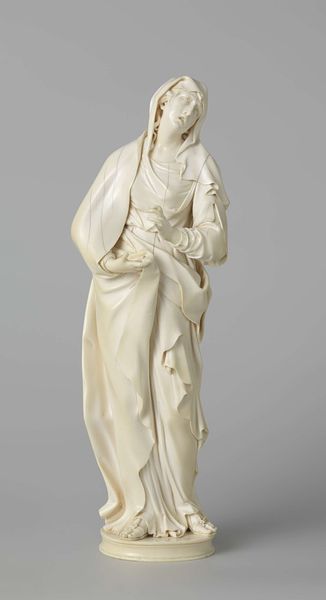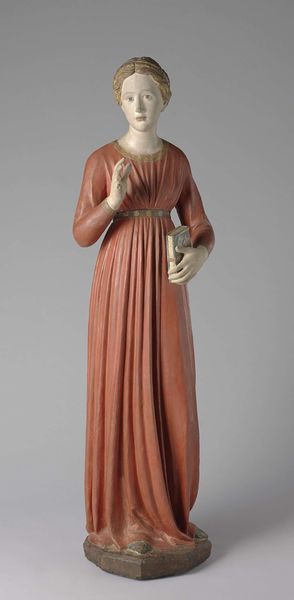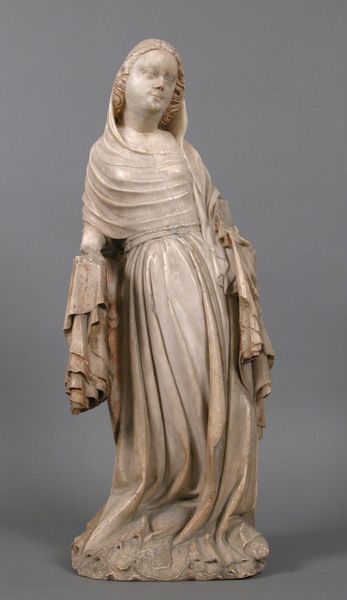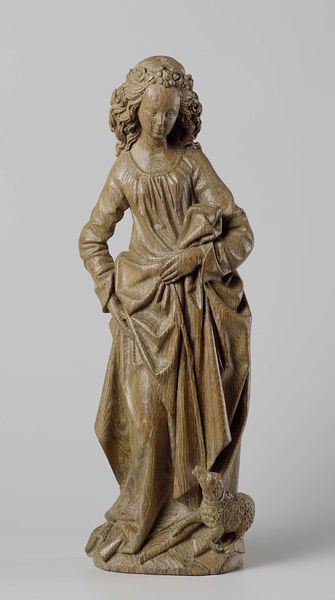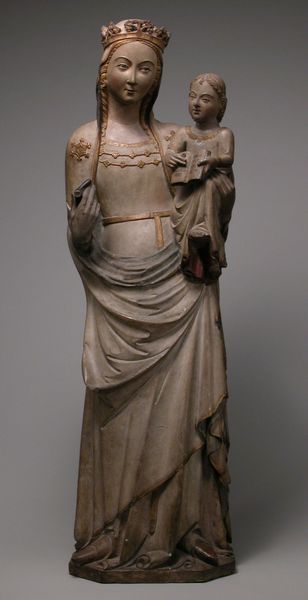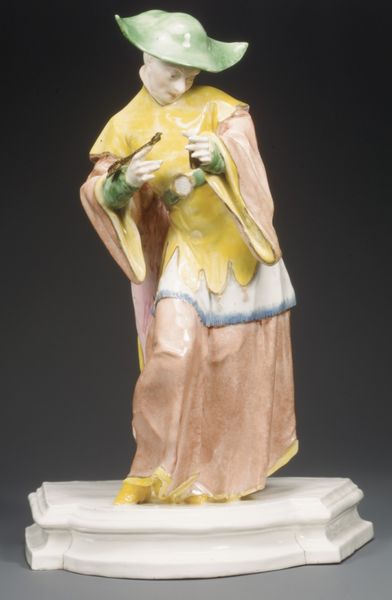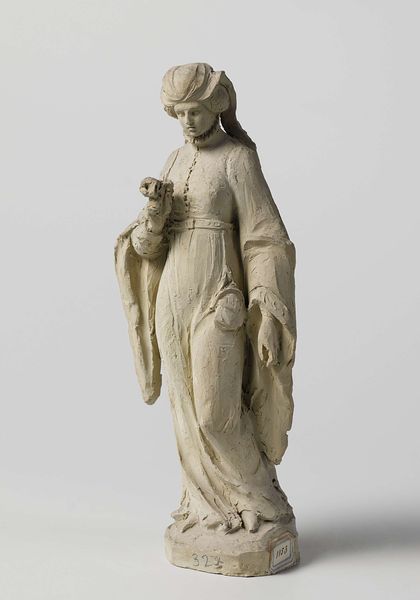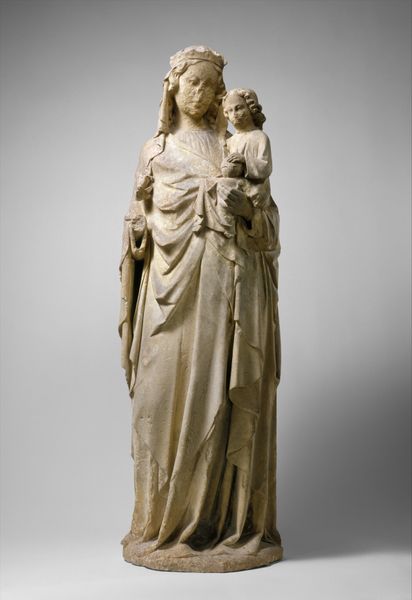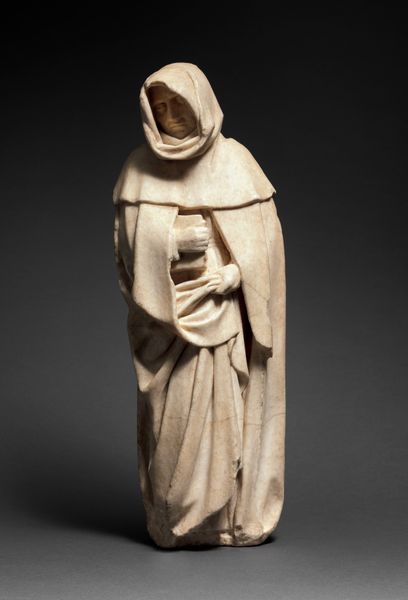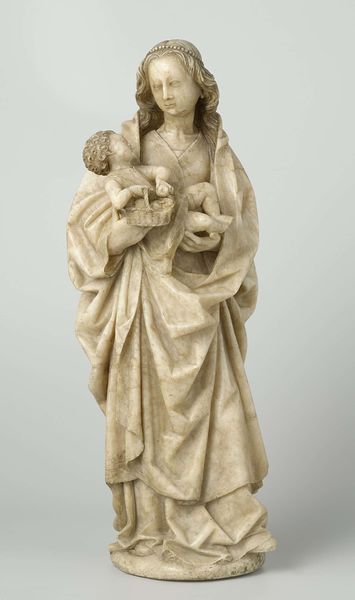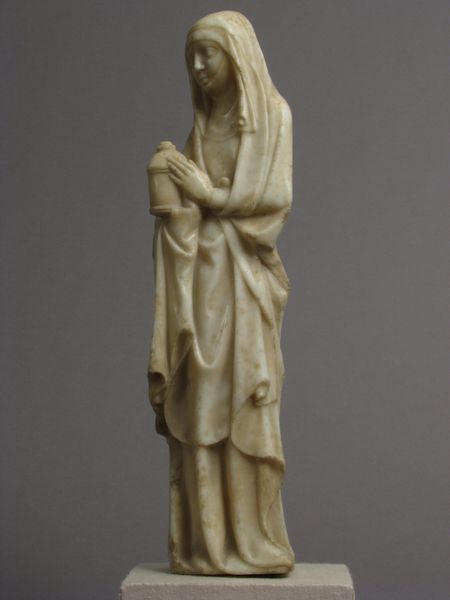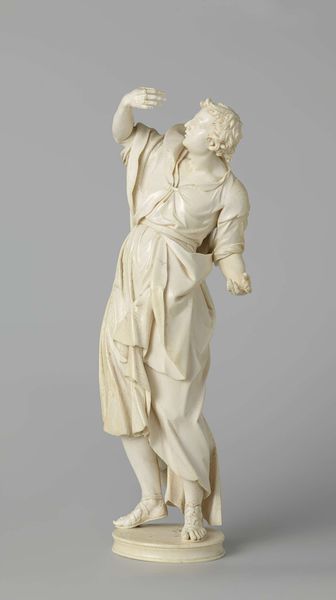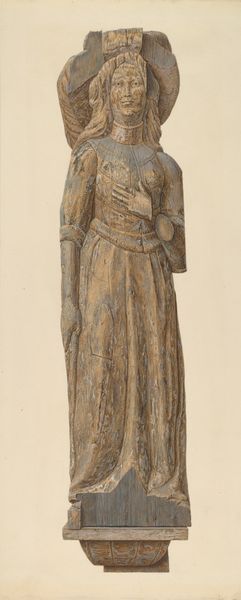
sculpture, wood
#
portrait
#
sculpture
#
figuration
#
sculpture
#
wood
#
italian-renaissance
Dimensions: height 160.0 cm, width 47.0 cm, depth 42.0 cm
Copyright: Rijks Museum: Open Domain
Editor: Here we have "The Annunciation," a wooden sculpture by Francesco di Valdambrino, dating back to about 1423. I am immediately drawn to the simple elegance of the figure, its creamy white surface almost luminous. What can you tell us about this piece? Curator: Well, focusing on materiality, it's crucial to remember that wood, particularly in the early Renaissance, wasn't just a neutral support. Its very nature influenced the sculpture's reception and use. Think about the labor involved in felling the tree, preparing the wood, and then meticulously carving it. What social class would have purchased this and why wood? Editor: I imagine that wood was readily available. Did its connection to craft rather than marble impact its perceived value compared to other mediums? Curator: Precisely. Wood invited a different engagement than more 'noble' materials. It allowed for a more widespread, yet also localized, production. Consider the surface treatment. The white paint isn’t just decorative. It signifies an intention, a visual experience created through layering of materials to convey its narrative. Can you imagine its purpose in that chapel? Editor: You mean it would allow the sculpture to be seen easier even in low light? I’ve never thought about it that way. I’d also guess the gold patterns imitate much more expensive woven patterns for visual enhancement? Curator: Exactly. How the labor is concealed and the way value is signified is crucial. How the artist or workshop used material to create meaning speaks volumes about art production and the marketplace then. Editor: So, the materials and their handling reveal not just the artist's skill, but also the broader economic and social context in which this "Annunciation" was created and viewed. Fascinating!
Comments
rijksmuseum about 2 years ago
⋮
The angel Gabriel is telling the Virgin that she will conceive a child. The figures’ slim proportions and long drapery folds typify the so-called ‘International Gothic’, an elegant style that flourished during the transition from the Middle Ages to the Renaissance. This figure group was made to flank the high altar of the church of San Francesco in Pienza (Tuscany).
Join the conversation
Join millions of artists and users on Artera today and experience the ultimate creative platform.
